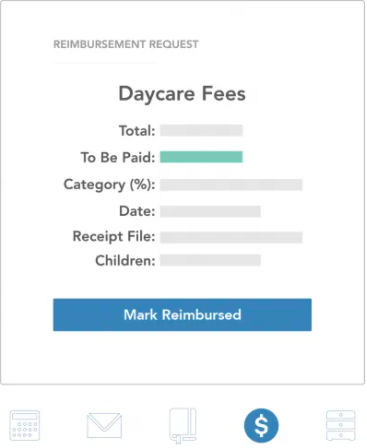15 Easy Ways to Build Structure in a Blended Family
Blended families are amazing, but it’s not always sunshine like the Brady Bunch. It takes dedication, hard work, and fair rules to set up a system that works for everyone. There are many ways to build structure in a blended family that can be fair and enjoyable for everyone.
You need to remember that you are bringing two units together that are familiar with different sets of rules, so creating fairness for one and all without rocking the boat too much is crucial.
Let’s discuss some ways to make the transition easier and mitigate issues down the road.
Each family is different, so we’ll go over things that work for every setup. Whether you’re the weekend warrior parents or the primary household, we have tips on taking the stress level down a notch and setting up clear expectations!
To make things clear, we’ll cover three subsections: Primary residence for all children, primary residence for half the children, and secondary home for all (we see you, weekend warriors, and you deserve a leg up, too!)
But before that, one of the most important things that need to be discussed is a very big underlying issue that many separated couples face. A lack of communication.
This is one of the biggest problems that occur between separated families and it tends to drive them further apart. This will only affect the child in the long run which is the last thing that any parent wants.
The underlying issue is that both parents are not putting in the effort to try and be involved fully in all aspects of the child’s life.
The best way to build structure in a blended family is by having strong communication between the separated couples.
This means being involved in knowing what is going on in the child’s life. Things like where and when they are supposed to be at a certain place, doctor’s appointments, or most importantly, the money being spent on the child.
We as a community realized that this issue can be solved if there was a way where both separated parents can have access to a platform that has all the information about the child needed.
This is why we have partnered with ourfamilywizard to bring you an app that lets you have the tools to be able to stay on track with anything that goes on with your child.
This platform comes with features like…

A Calendar

Message Board

Journal

Expense Log

Bank Info
It is essentially an easy way to have proper structure at the tip of your finger. Click here for more information on the platform
Primary Residence For All Kids
When trying to determine ways to build structure in a blended family, you will need to understand the amount of time you will be spending with the children.
They can be living with you, visit you every other day, or even might only see you on the weekends. If your household is full of kids of all ages and you’re the primary residence, it’s critical to outline your rules and expectations.
Feelings of favoritism can quickly get out of hand, especially if the children are close in age. Plus, as the primary household, you’re dealing with more than the weekend warriors. You have school and schedules to follow, bedtimes to discuss, and twice (or more) the number of kids to parent.
1. Have a Lengthy Discussion With Your Partner.
It’s imperative to understand what the rules were on both sides before the blend happened. It is important to talk with your partner about what rules to add and what rules should change.
Some rules will probably change, but changing too much too quickly can result in rebellion and arguments.
If you were very strict with your kids and your partner was very lax with theirs, that will cause issues. Decide on a suitable medium, and be sure to discuss the reasons behind your rules.
At the stage that you are in, “because”, is not an adequate answer. You need to break down what works and doesn’t work for each family unit before deciding on an overall approach.
2. Remember, Every Child Is Different!
Some children honestly need more structure than others, even outside of blended families, so consider that before laying out the new rules.
If one child gets their homework done without issue and another needs strict guidance, factor that in but be sure not to point out why. One comment can destroy a kid’s self-esteem and make them feel inadequate. Set up a homework system where everyone can thrive.
3. Talk It Over With The Kids.
Once you’ve decided on the ground rules with your partner, have a family discussion. Let the older kids have some input and hear them out on their reasoning. For the youngsters, make the rules simple.
It is key to remember that everyone should feel seen and heard.
For instance, if you have a rule about bedtime, stagger it for different ages and then stick to it as much as possible. If one teenager would like 30 extra minutes, make sure you can apply it to every other teenager in the house.
4: “Good Cop, Bad Cop” isn’t going to work.
Many issues can arise if only one person in the household is the disciplinarian. Things will never be fair if you don’t work on it together with your partner.
Show a united front when it comes to repercussions for any kids, and make sure you tailor them fairly. Your child might not care if you take their iPad for the afternoon, but it might devastate the other.
Having that punishment for both seems fair since it’s the same, but if they’re reacting differently and it’s heavily impacting one over the other, it’s time to rethink it. Clearly explain to all children involved why! There’s no reason to leave them in the dark about it.
5. Allow For Changes
Staying rigid with your rules when they aren’t working for everyone can create undue stress in a household.
If things aren’t going as well as you thought, it’s okay to try something else. You don’t need to go with the flow and let the kids run rampant, but you do need to assess the situation regularly and see if there is room for improvement.
Try setting up a weekly check-in during dinner to see how everyone feels and ensure they know they can give honest feedback without getting in trouble.
Primary Residence for Half the Kids
Having half the kids live with you full time and half only showing up on weekends can have some kids feeling majorly left out.
If this is your situation, you want to make sure that the secondary residence children are getting just as much love as the primary residence ones.
6. Make Sure Fun Activities Include Everyone
Tuesday night bowling can be a blast, but there’s nothing worse for a kid than coming over and hearing all about the fun time the primary residence kids had while everyone sits around all weekend.
Schedule outings when everyone is together as much as possible, or consider reaching out to the co-parents and picking up the secondary residence kids on your way. It might make for a boring week at home, but it will make a massive difference in the long run.
7. Keep Things Fair
When you only see half the children occasionally, it can be easy to let things slide when they mess up, but this is unfair to the primary residence kids.
Make sure you aren’t alienating the ones who live with you full time by giving grace to the ones who come on the weekends that you wouldn’t for the ones who live with you.
You can set up “weekend” rules for all involved so long as you discuss it with your partner and primaries ahead of time.
If you plan something out and go the extra mile for one set of kids, apply that same strategy to the others. Kids notice more than you think and internalize a lot so being fair in that treatment is important.

9. Co-Parenting Transparency Is Crucial.
With two different households come two sets of rules. You have zero control over what happens outside of your home. Trying to make a co-parent conform to your ideas of what’s right isn’t going to happen, so instead, set up a system of transparency.
By fully understanding all sides of the equation, it’s easier to discuss schedule changes and expectations.
10. Don’t Stress About perfection.
If you’re constantly feeling the pressure for every moment to feel perfect, the amount of stress you’re under will eventually make you crack.
Take a deep breath, and know that things will be messy while everyone settles into the routines. It’s easy for parents to want to control the children’s exposure to each other, especially if you don’t agree with the co-parents’ rules or if one set of kids is maturing quicker than the other.
Understand that the kids involved will also be finding their new normal with each other, and feelings will be haywire for a while.
Related: How Do I Keep My Word As A Stepparent
Secondary Residence for all Kids
If you only have both sets of kids on the weekends, things can quickly devolve if you don’t set boundaries.
For the kids, your house is a “break” from the day in and day out of their home life, and they can try to take advantage of the situation.
11. You Can Be The “Fun Parents,” But Don’t Overdo It.
If you’re constantly trying to make sure the kids have fun by packing weekends full of activities, you’re setting yourself up for an unsustainable situation.
Try planning just one activity each weekend that everyone will enjoy. Since children can have vastly different interests, rotate the activities so no one feels left out.
12. Don’t Get Suckered.
The phrase “but my mom lets me” has nothing to do with you.
Your house, your rules. It’s okay if you don’t allow things the co-parent does. It’s not a competition about which place is the most fun or has the most freedom. You need to stay realistic about what you’re okay with and make that clear from the get-go.
13. Prepare For The Switch-Up
It’s okay to admit that this isn’t an easy transition.
Kids are loud, messy, and generally chaotic. Having them all descend into your house for a day or two and then leave can feel jarring.
This can make you feel guilty and have you overcompensating by allowing them freedoms and reducing structure. Just because they’re only around for a short amount of time doesn’t mean you can’t make them clean up after themselves before they leave.
Set this expectation up from day one, and they’ll respect it.
14. Set Them Up For Success Once They Go Home
One of the best ways to build structure in a blended family is to talk with the other co-parent and find out if there are certain things the children should be doing that weekend.
Maybe one has a school project due or an exam coming up. You’re a parent, too, and these things shouldn’t fall only on the other parent. Make sure the kids are taking care of their responsibilities while they’re in your home.
One of the best ways to build structure in a blended family
15. Make Sure The Kids Know They’re Always Welcome
One thing that can happen without you noticing is children might feel as if they’re only welcome on the weekends or when they’ve been scheduled to see you.
Go out of your way to make sure everyone involved knows you’re available more often than that.
If there are numerous children involved and they don’t always get along, try dedicating a night or two a week to spending some alone time with each of them regularly.

Things May Never Be Perfect
There are many ways to build structure in a blended family.
It’s important to understand that blended families come in all shapes and sizes and that it may never work precisely how you were hoping.
Give yourself, your partner, your co-parent, and the children involved compassion and empathy. I can’t stress enough how important it is to regularly assess the structures you’ve set up, regardless of when the kids are with you.
Many things will happen organically that require changes to schedules and rules, and allowing some flexibility can go a long way towards keeping everyone happy. Be clear with everyone what you are and aren’t willing to compromise on.
Before you know it, it won’t be new, it’ll just be life!
